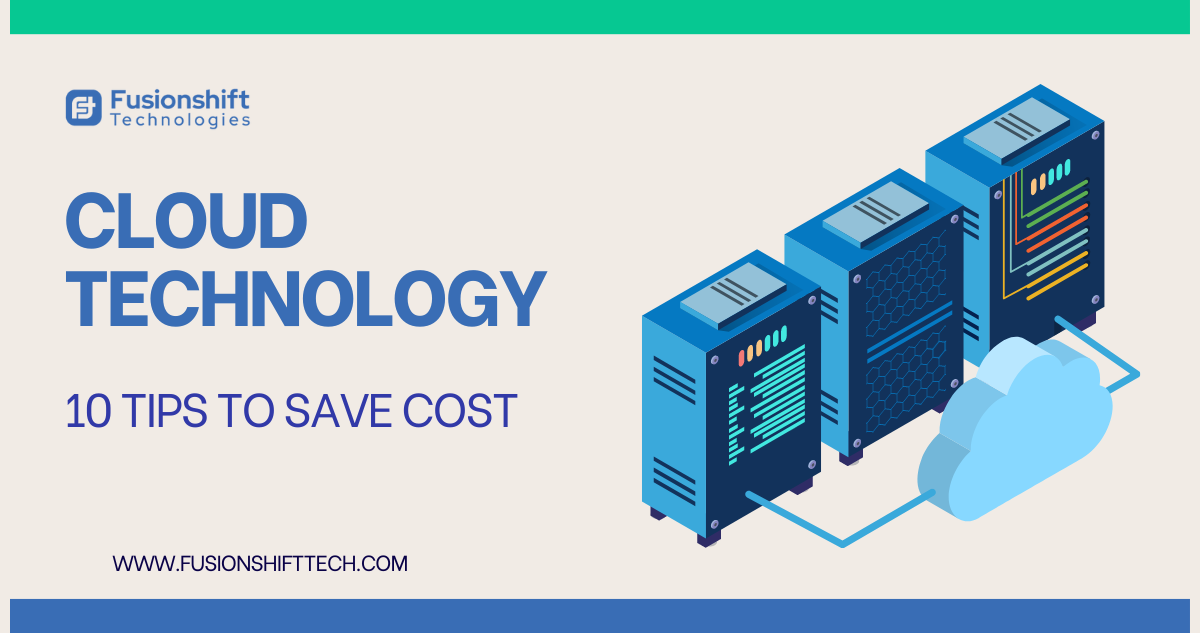Cloud Cost Optimization
In the dynamic landscape of modern business, optimizing cloud costs is a paramount objective for organizations striving for financial efficiency. This blog unveils ten robust cloud cost optimization practices that could potentially slash nearly 60% off your next cloud bill.
Every stakeholder should be well-versed in the primary goals of their organization. While startups often prioritize customer growth, larger enterprises aim at increasing margins. With this knowledge, DevOps can seamlessly align day-to-day decisions with the overarching objectives, balancing customer needs and business value.
Here are the 10 cloud cost optimization tips shared by the professionals at FusionShift Technologies.
-
Identifying Mismanaged Resources:
Unused or unattached resources, such as idle load balancers and instances, contribute to wasted expenditure. Regularly scanning Azure and AWS bills is crucial to identify and eliminate charges for resources no longer in use, thereby reducing running costs.
-
Monitoring Cost Anomalies:
Leverage tools like Middleware with a cost management console to detect and monitor usage anomalies. This includes setting budgets, forecasting AWS costs, and utilizing machine learning functionality to identify spending irregularities. Proactive benchmarking helps prevent unexpected costs and ensures adherence to planned budgets.
-
Using Autoscaling to Reduce Costs:
Implementing autoscaling enables dynamic adjustment of server capacity, maintaining optimal performance at the lowest cost. This automated approach eliminates the need for real-time responses to traffic spikes, saving both time and manpower.
-
Using Reserved Instances (RI):
Explore alternatives to on-demand pricing models, such as Reserved Instances (RI), which offer a substantial 75% discount on cloud services. Additionally, spotting instances where spare computing capacity is auctioned at reduced rates presents another avenue for achieving discounted cloud services.
-
Considering a Move to a Microservices Environment:
Transitioning from on-premises to the cloud often occurs without modifications, potentially inheriting inefficiencies. Moving to a microservices-based architecture incrementally and strategically can save time and funds while eliminating inefficiencies contributing to cloud waste.
-
Using Heat Maps for System Understanding:
Leverage heat maps to represent peaks and troughs in computing demand visually. This insightful tool helps estimate whether certain services can be safely shut down during specific times, minimizing payments for unused services and reducing overall cloud costs.
-
Rightsizing Computing Services:
A comprehensive overview of cloud services is essential for rightsizing. Identify over-provisioned or idle assets and leverage rightsizing tools to recommend changes, ensuring peak performance and reducing costs.
-
Considering Multi-Cloud vs. Single Cloud:
While multi-cloud solutions offer increased uptime and availability, potential cost losses and administrative complexities must be weighed against the benefits. Assess the trade-offs to determine the most cost-effective strategy.
-
Utilizing Real-Time Analytics for Quick Decisions:
Empower team members with real-time analytics to make informed decisions. By monitoring cost indicators and identifying unusual patterns early on, teams can prevent excessive spending and allocate resources more effectively.
-
Eliminating Shadow IT Practices:
Address the challenge of unaccounted cloud spending attributed to projects managed outside the IT department. Educate the workforce on the risks of shadow IT and implement measures such as regular audits and blocking unsanctioned apps to prevent unauthorized cloud access.
Conclusion:
Cloud cost optimization is an ongoing process that extends beyond IT responsibilities to involve the entire organization. Regular reviews and assessments are essential to ensuring the most cost-effective solutions are in place. By implementing the strategies discussed in this article, organizations can effectively manage their cloud costs, ensuring maximum value from their cloud investments.








